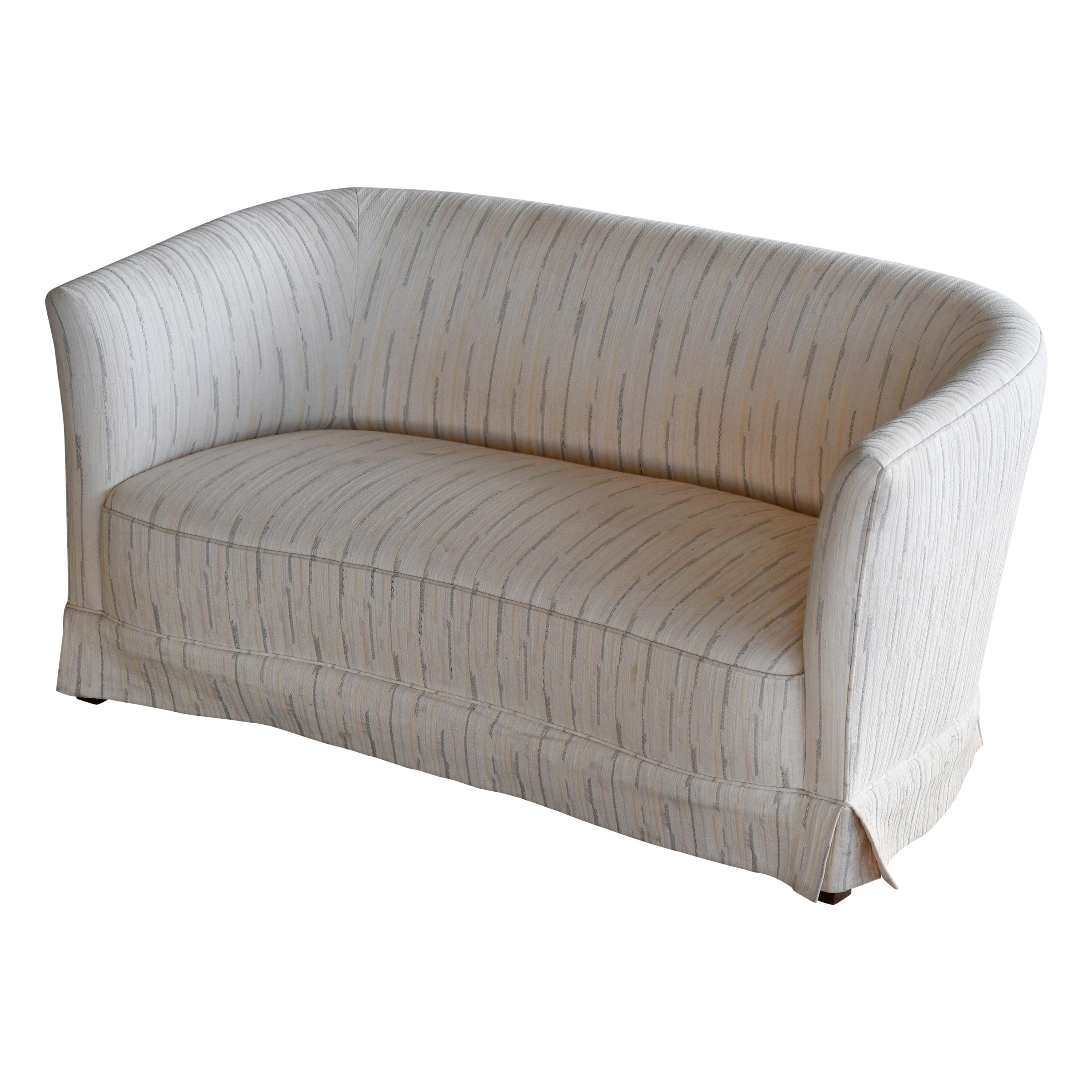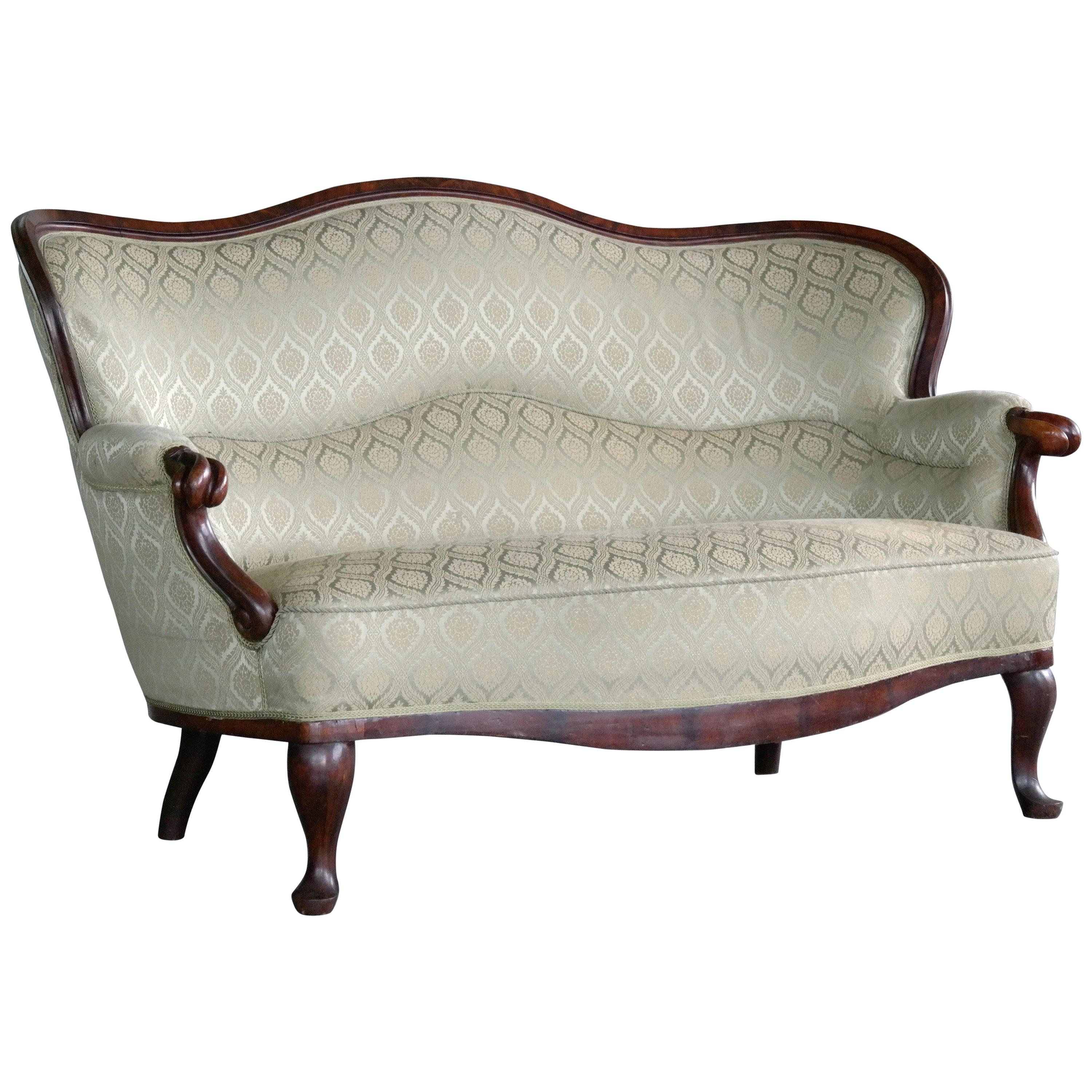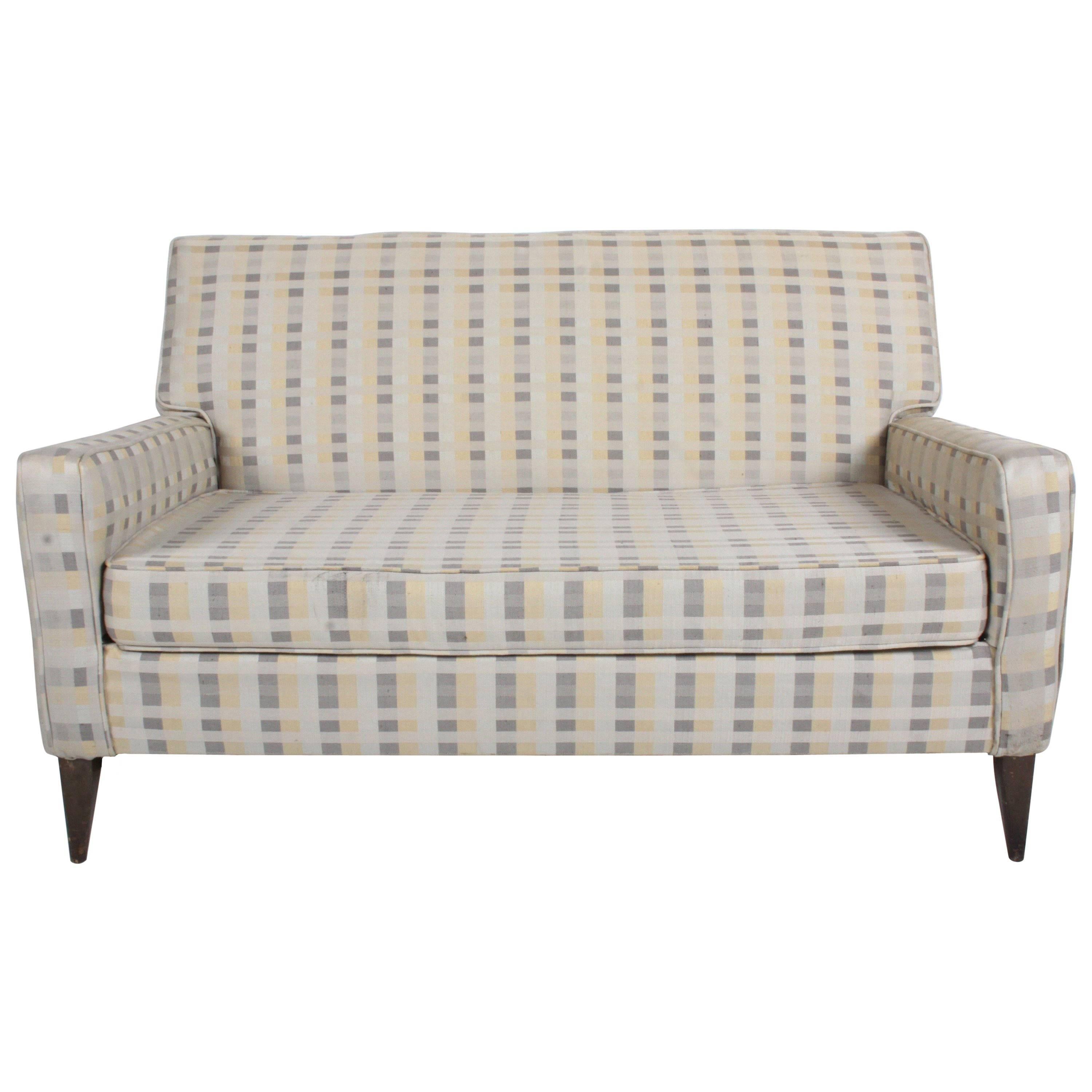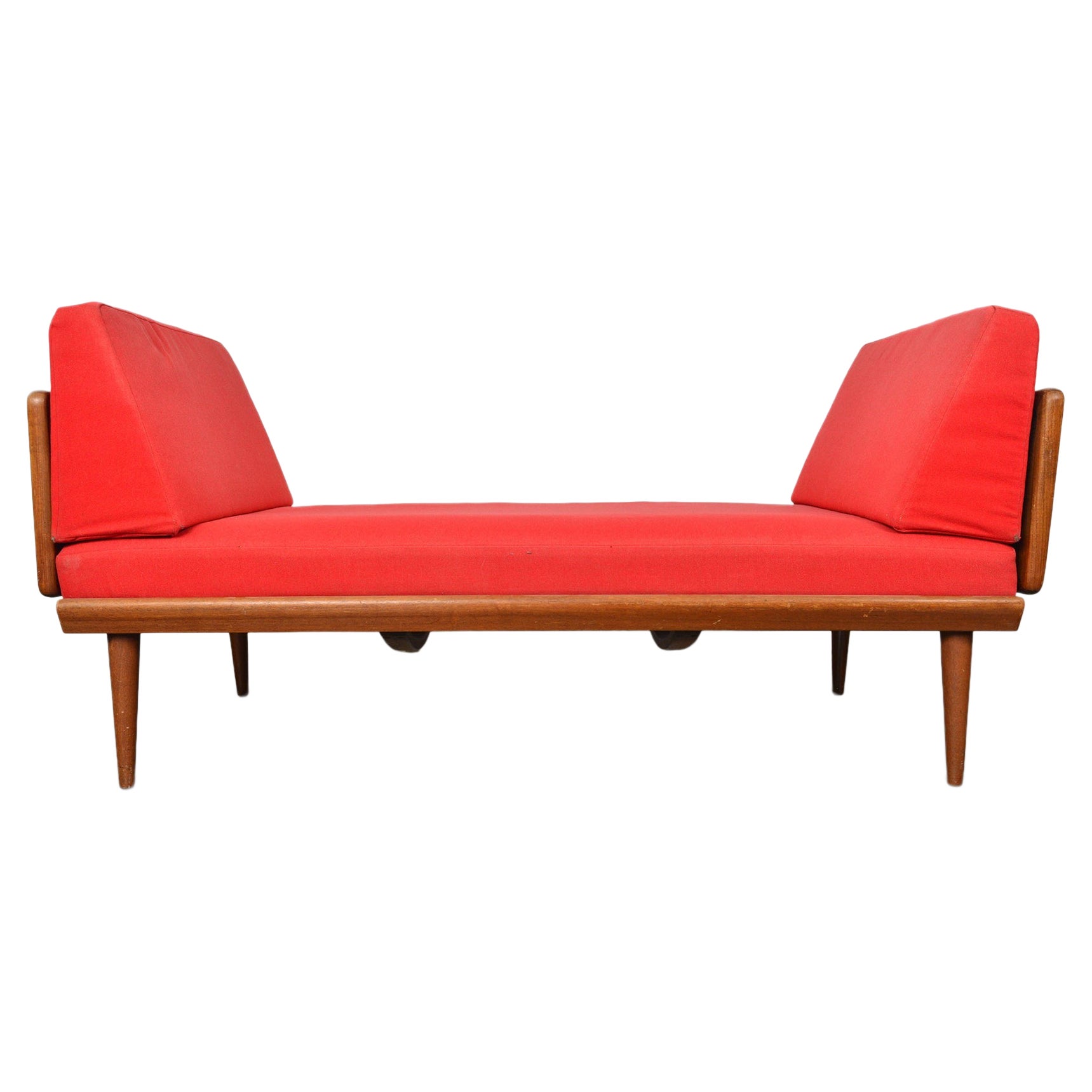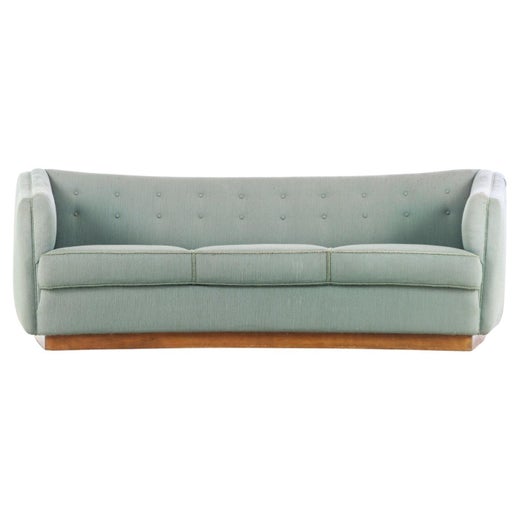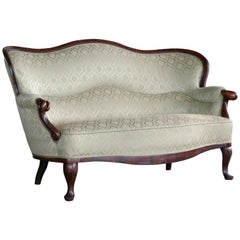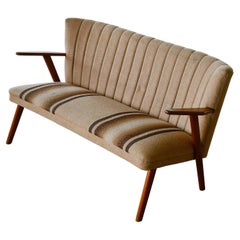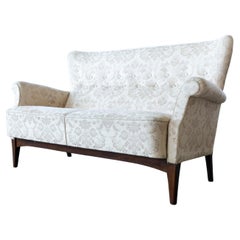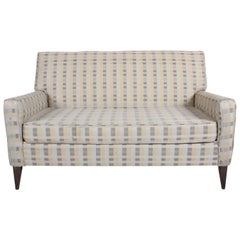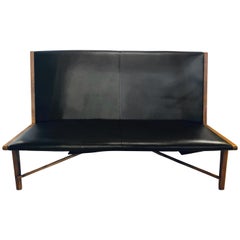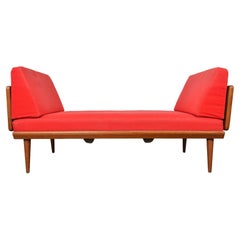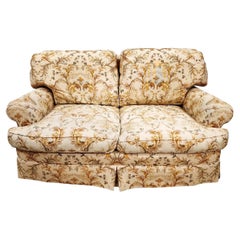Danish Midcentury Settee or Loveseat by Peter Hvidt, 1950's
About the Item
- Creator:Fritz Hansen (Maker),Peter Hvidt (Designer)
- Dimensions:Height: 31.5 in (80.01 cm)Width: 50 in (127 cm)Depth: 29 in (73.66 cm)Seat Height: 15 in (38.1 cm)
- Style:Mid-Century Modern (Of the Period)
- Materials and Techniques:
- Place of Origin:
- Period:
- Date of Manufacture:circa 1950
- Condition:Reupholstered. Wear consistent with age and use. Re-upholstered in recent times.
- Seller Location:Bridgeport, CT
- Reference Number:Seller: #211stDibs: LU2373341545032
Peter Hvidt
One half of the influential Danish furniture duo Hvidt and Mølgaard, architect and designer Peter Hvidt created shapely works in teak and rosewood that could be mass-produced and transported at a scale rarely seen before his time. Alongside his business partner, Aalborg-born designer Orla Mølgaard-Nielsen, the pair crafted furniture which stands today as a masterclass in the combination of elegance and practicality that is typical of Scandinavian modernism.
Hvidt was born in Copenhagen in 1916. He studied architecture and cabinetry, and graduated from the School of Arts and Crafts in Copenhagen. Hvidt established his own design firm in 1940 and taught for three years at his former school, during which he designed the teak Portex chair — Denmark’s first stacking chair (this design has alternatively been attributed to Hvidt’s partnership with Mølgaard-Nielsen over the years).
The exceptional collaboration between Hvidt and Mølgaard-Nielsen took shape in 1944. A student of pioneering Danish modernist designer and architect Kaare Klint and fellow graduate of the School of Arts and Crafts, Mølgaard brought his technical prowess and eye for practical design to the partnership. Together, for more than three decades, Hvidt and Mølgaard would produce over 250 furniture designs, a legacy that included the iconic AX chair.
A masterpiece of technical expertise and innovative woodworking, the sculptural AX armchair was designed in collaboration with manufacturer Fritz Hansen during the late 1940s. It features double-curved laminated wood in the seat and back, and is an early example of knock-down furniture. This meant that it could be easily dismantled and assembled at its destination, which rendered the chair economical for transport on cargo ships and therefore could reach a worldwide audience. The AX went into production in 1950 and eventually gave way to a series that featured tables and other seating.
Hvidt’s proclivity for forward-looking design was typical of the venturesome furniture makers of the mid-century modern era. This extended to textures and materials, too — he believed that a tasteful combination of materials could add character and visual intrigue. With Mølgaard-Nielsen, Hvidt designed streamlined coffee tables, rosewood chairs upholstered with sumptuous black leather and teak side tables with cane shelves (teak was a sought-after material for designers at the time).
The duo’s work with celebrated manufacturers Fritz Hansen, France & Søn and Søborg Møbelfabrik has been a part of exhibitions at New York’s Museum of Modern Art, Copenhagen’s Design Museum and the National Gallery of Victoria in Melbourne.
On 1stDibs, find vintage Peter Hvidt seating, tables and case pieces.
Fritz Hansen
When the Copenhagen-based furniture maker Fritz Hansen opened for business more than 140 years ago, the company — which today styles itself The Republic of Fritz Hansen — adhered to the traditional, time-honored Danish values of craftsmanship in woodworking and joinery. Yet thanks to the postwar innovations of Arne Jacobsen and others, Fritz Hansen would become the country’s leader in Scandinavian modern design using new, forward-looking materials and methods.
Fritz Hansen started his company in 1872, specializing in the manufacture of small furniture parts. In 1915, the firm became the first in Denmark to make chairs using steam-bent wood (a technique most familiar from birch used in the ubiquitous café chairs by Austrian maker Thonet). At the time, Fritz Hansen was best known for seating that featured curved legs and curlicue splats and referenced 18th-century Chippendale designs.
In the next few decades, the company promoted simple, plain chairs with slatted backs and cane or rush seats designed by such proto-modernist masters as Kaare Klint and Søren Hansen. Still, the most aesthetically striking piece Fritz Hansen produced in the first half of the 20th century was arguably the China chair of 1944 by Hans Wegner — and that piece, with its yoke-shaped bentwood back- and armrest, was based on seating manufactured in China during the Ming dynasty. (Wegner was moved by portraits he’d seen of Danish merchants in the Chinese chairs.)
Everything changed in 1952 with Arne Jacobsen’s Ant chair. The collaboration between the architect and Fritz Hansen officially originated in 1934 — that year, Jacobsen created his inaugural piece for the manufacturer, the solid beechwood Bellevue chair for a restaurant commission. The Ant chair, however, was the breakthrough.
With assistance from his then-apprentice Verner Panton, Jacobsen designed the Ant chair for the cafeteria of a Danish healthcare company called Novo Nordisk. The chair was composed of a seat and backrest formed from a single piece of molded plywood attached, in its original iteration, to three tubular metal legs. Its silhouette suggests the shape of the insect’s body, and the lightweight, stackable chair and its biomorphic form became an international hit.
Jacobsen followed with more plywood successes, such as the Grand Prix chair of 1957. The following year he designed the SAS Royal Hotel in Copenhagen and its furnishings, including the Egg chair and the Swan chair. Those two upholstered pieces, with their lush, organic frames made of fiberglass-reinforced polyurethane, have become the two chairs most emblematic of mid-20th-century cool. Moreover, the Egg and Swan led Fritz Hansen to fully embrace new man-made materials, like foam, plastic and steel wire used to realize the avant-garde creations of later generations of designers with whom the firm collaborated, such as Piet Hein, Jørn Utzon (the architect of the Sydney Opera House) and Verner Panton. If the Fritz Hansen of 1872 would not now recognize his company, today’s connoisseurs certainly do.
Find a collection of vintage Fritz Hansen tables, lounge chairs, sofas and other furniture on 1stDibs.
- ShippingRetrieving quote...Shipping from: Bridgeport, CT
- Return Policy
More From This Seller
View AllVintage 1950s Danish Scandinavian Modern Loveseats
Wool, Beech
Antique 1860s Danish Rococo Revival Settees
Mahogany
Vintage 1950s Danish Scandinavian Modern Settees
Wool, Beech
Vintage 1950s Danish Mid-Century Modern Settees
Beech, Wool
Vintage 1960s Danish Mid-Century Modern Settees
Teak, Leather
Vintage 1940s Danish Mid-Century Modern Loveseats
Wool, Beech
You May Also Like
Vintage 1950s American Mid-Century Modern Loveseats
Upholstery, Wood
Vintage 1970s Mid-Century Modern Settees
Leather, Wood
Mid-20th Century Danish Mid-Century Modern Loveseats
Cane, Teak
Vintage 1980s Settees
Cotton
Vintage 1930s English Edwardian Loveseats
Fabric
Antique 19th Century Italian Renaissance Revival Settees
Upholstery, Giltwood, Burl
